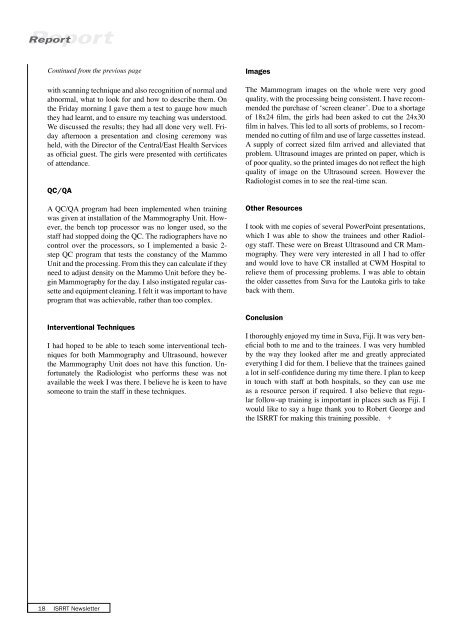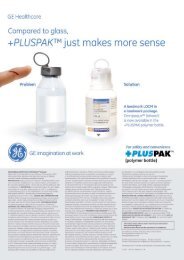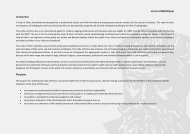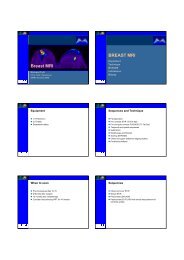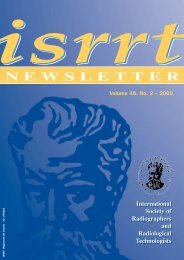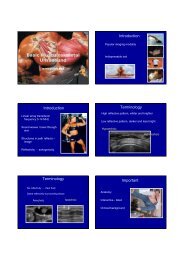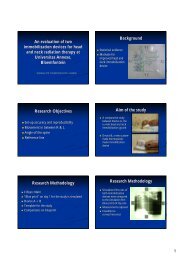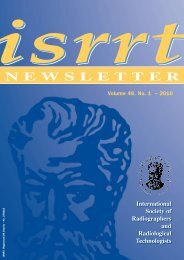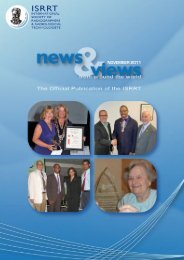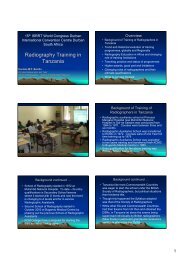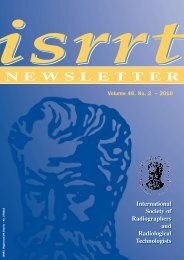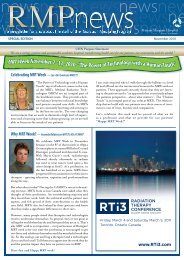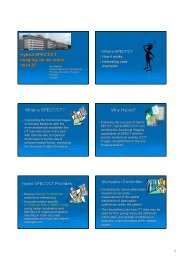NEWSLETTER - ISRRT
NEWSLETTER - ISRRT
NEWSLETTER - ISRRT
Create successful ePaper yourself
Turn your PDF publications into a flip-book with our unique Google optimized e-Paper software.
Report<br />
Continued from the previous page<br />
with scanning technique and also recognition of normal and<br />
abnormal, what to look for and how to describe them. On<br />
the Friday morning I gave them a test to gauge how much<br />
they had learnt, and to ensure my teaching was understood.<br />
We discussed the results; they had all done very well. Friday<br />
afternoon a presentation and closing ceremony was<br />
held, with the Director of the Central/East Health Services<br />
as official guest. The girls were presented with certificates<br />
of attendance.<br />
QC/QA<br />
A QC/QA program had been implemented when training<br />
was given at installation of the Mammography Unit. However,<br />
the bench top processor was no longer used, so the<br />
staff had stopped doing the QC. The radiographers have no<br />
control over the processors, so I implemented a basic 2step<br />
QC program that tests the constancy of the Mammo<br />
Unit and the processing. From this they can calculate if they<br />
need to adjust density on the Mammo Unit before they begin<br />
Mammography for the day. I also instigated regular cassette<br />
and equipment cleaning. I felt it was important to have<br />
program that was achievable, rather than too complex.<br />
Interventional Techniques<br />
I had hoped to be able to teach some interventional techniques<br />
for both Mammography and Ultrasound, however<br />
the Mammography Unit does not have this function. Unfortunately<br />
the Radiologist who performs these was not<br />
available the week I was there. I believe he is keen to have<br />
someone to train the staff in these techniques.<br />
18 <strong>ISRRT</strong> Newsletter<br />
Images<br />
The Mammogram images on the whole were very good<br />
quality, with the processing being consistent. I have recommended<br />
the purchase of ‘screen cleaner’. Due to a shortage<br />
of 18x24 film, the girls had been asked to cut the 24x30<br />
film in halves. This led to all sorts of problems, so I recommended<br />
no cutting of film and use of large cassettes instead.<br />
A supply of correct sized film arrived and alleviated that<br />
problem. Ultrasound images are printed on paper, which is<br />
of poor quality, so the printed images do not reflect the high<br />
quality of image on the Ultrasound screen. However the<br />
Radiologist comes in to see the real-time scan.<br />
Other Resources<br />
I took with me copies of several PowerPoint presentations,<br />
which I was able to show the trainees and other Radiology<br />
staff. These were on Breast Ultrasound and CR Mammography.<br />
They were very interested in all I had to offer<br />
and would love to have CR installed at CWM Hospital to<br />
relieve them of processing problems. I was able to obtain<br />
the older cassettes from Suva for the Lautoka girls to take<br />
back with them.<br />
Conclusion<br />
I thoroughly enjoyed my time in Suva, Fiji. It was very beneficial<br />
both to me and to the trainees. I was very humbled<br />
by the way they looked after me and greatly appreciated<br />
everything I did for them. I believe that the trainees gained<br />
a lot in self-confidence during my time there. I plan to keep<br />
in touch with staff at both hospitals, so they can use me<br />
as a resource person if required. I also believe that regular<br />
follow-up training is important in places such as Fiji. I<br />
would like to say a huge thank you to Robert George and<br />
the <strong>ISRRT</strong> for making this training possible.


